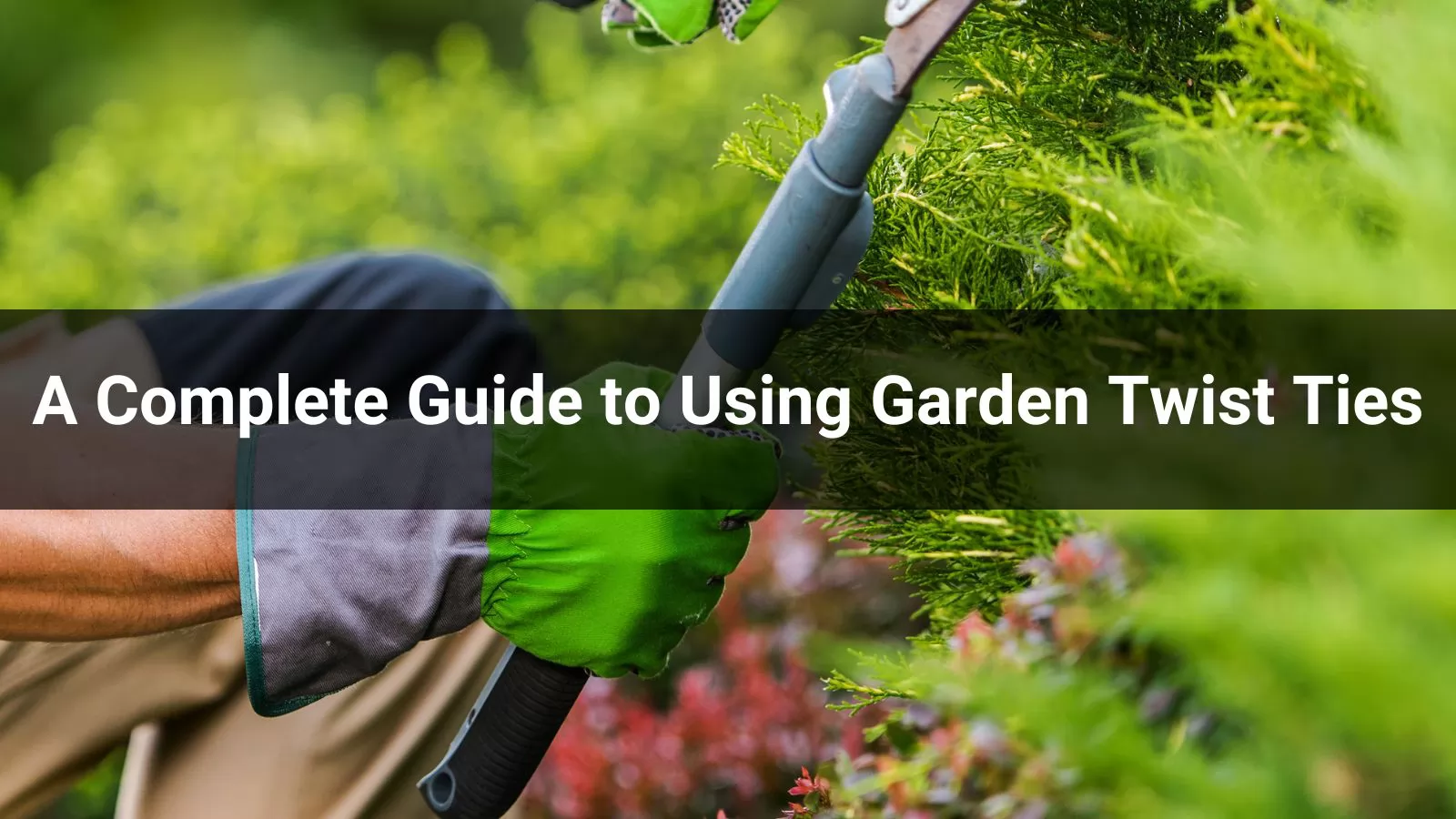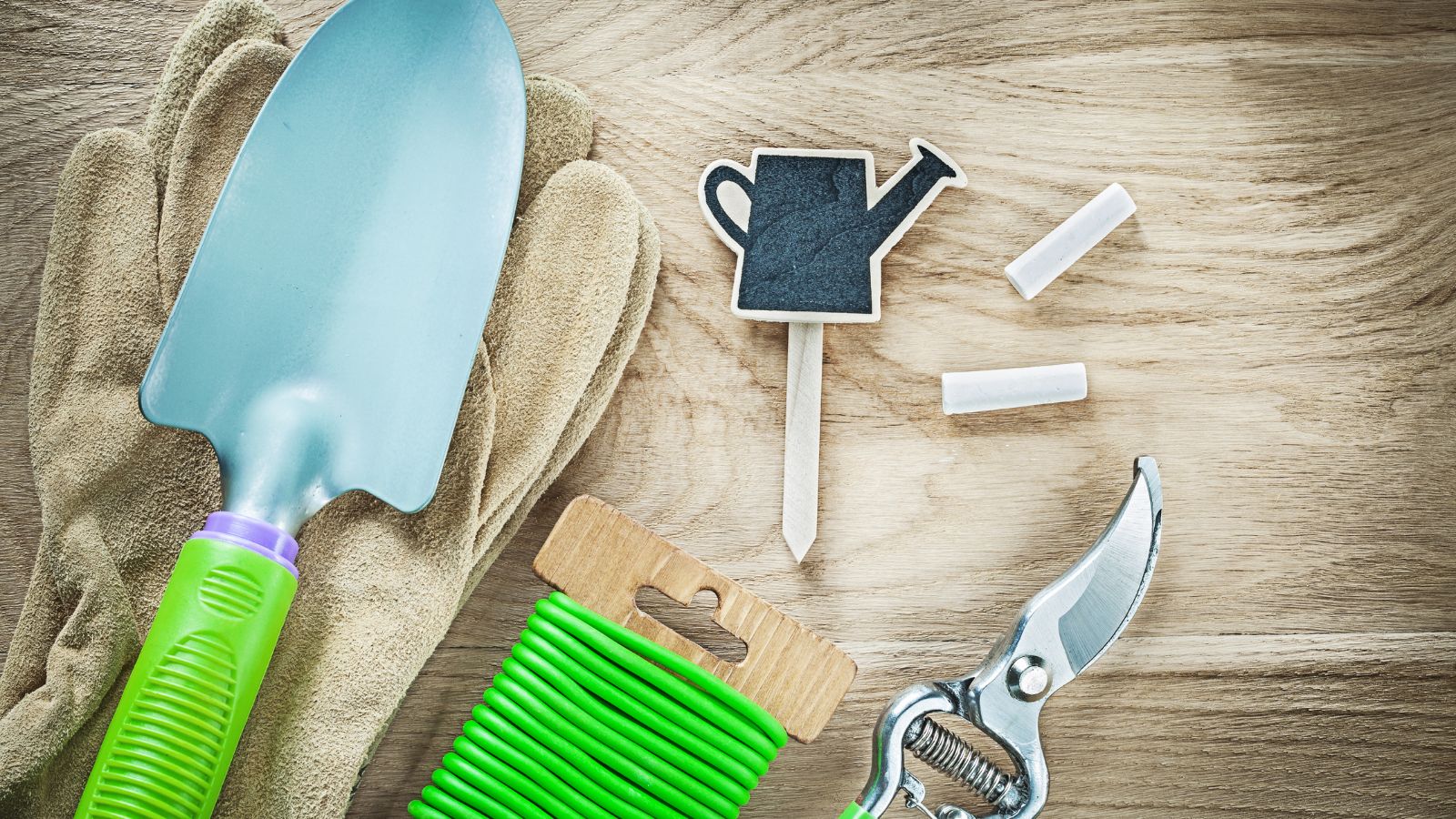
Garden twist ties are small but mighty tools that every gardener should have in their toolkit. These versatile and easy-to-use items can make your gardening tasks more efficient, whether you’re supporting delicate plants, organizing your garden, or crafting DIY solutions for plant care. In this guide, we’ll dive into everything you need to know about garden twist ties, from their benefits to practical tips for using them effectively.
Garden twist ties are an essential tool for gardeners, offering a simple yet highly effective way to secure and support plants. These ties consist of a flexible wire core encased in a soft, durable coating, typically made of plastic or rubber. This construction provides the perfect balance of strength and flexibility, making them ideal for a variety of gardening tasks. Designed specifically to help gardeners secure plants to stakes, trellises, or other structures, garden twist ties prevent damage to delicate stems and branches. With their adjustable nature and availability in a range of lengths, strengths, and materials, twist ties are suitable for everything from small indoor plants to larger, more robust outdoor vegetation. Their versatility extends beyond gardening, offering practical uses around the home and workshop.
One of the primary advantages of garden twist ties is their ability to provide support and stability to plants. They are particularly helpful for preventing plants from bending or breaking under their own weight or during strong winds, making them indispensable in windy or storm-prone areas. Additionally, their gentle-on-plants design ensures that stems and branches are not damaged during use. The soft outer coating minimizes the risk of injury to plants, even when tied around delicate growth.

Another key benefit of garden twist ties is their adjustable and reusable nature. Unlike some other plant-support solutions, twist ties can be easily repositioned as plants grow, accommodating their natural development. Many garden twist ties are also reusable, making them a cost-effective and eco-friendly choice for gardeners who value sustainability. Beyond their core gardening function, twist ties have versatile applications in other areas. They can be used to bundle tools, organize cables, or even as part of DIY garden decorations, proving their value as a multipurpose tool.
Garden twist ties come in various types, each designed for specific gardening needs and preferences. Plastic-coated wire ties are one of the most popular choices due to their durability and weather resistance. They are perfect for outdoor gardens, where exposure to rain, sun, and wind requires robust materials that can withstand the elements. For gardeners working with more delicate plants, rubber-coated ties offer an even softer touch, providing gentle support without harming fragile stems or branches.
Another innovative option is Velcro garden ties, which are adjustable and reusable. These ties are ideal for plants that require frequent adjustments or where convenience is a priority. Simply wrap the Velcro tie around the plant and its support, and you can reposition it as needed without any hassle. For environmentally conscious gardeners, biodegradable ties present an excellent option. Made from eco-friendly materials that decompose over time, these ties reduce waste while still providing the functionality needed for plant support. With so many options available, gardeners can choose the type of twist tie that best suits their plants and environmental conditions.

Choose the Right Type and Length:
Match the size and strength of the twist tie to your plant’s needs. For heavier plants, use thicker ties.
Tie Loosely:
Always leave a small gap between the tie and the plant stem to allow for growth. Tight ties can restrict growth and damage the plant.
Anchor to a Support:
Secure the plant to a stake, trellis, or other sturdy support. Wrap the tie around both the stem and support, then twist the ends together to hold it in place.
Check Regularly:
Inspect the ties periodically to ensure they’re not too tight or cutting into the plant as it grows. Replace or adjust as needed.
Reuse When Possible:
If you’re using durable twist ties, collect and reuse them for future gardening tasks.
Using garden twist ties may seem straightforward, but there are a few common mistakes that can hinder their effectiveness or even harm your plants. One frequent error is tying the twist ties too tightly around plant stems. While it may seem like a secure hold is necessary, overly tight ties can restrict a plant’s growth, causing stress or damage to the stem. Always ensure there is enough space for the plant to expand and grow naturally, leaving a slight gap between the tie and the plant.
Another mistake is using non-garden-specific ties for supporting plants. While household items like string or uncoated wire might seem like a convenient substitute, they often lack the weatherproofing or flexibility of garden twist ties. Worse, materials like bare wire can cut into stems, causing significant harm. For the best results, always choose ties specifically designed for gardening tasks.
Lastly, many gardeners ignore the need for regular adjustments. Plants grow rapidly, especially during the peak growing season, and ties that were initially loose can become restrictive over time. Failing to check and adjust the ties as your plants grow can lead to damage or stunted development. Make it a habit to inspect your garden twist ties periodically and reposition or replace them as necessary.
To get the most out of your garden twist ties, proper care and maintenance are essential. If you’re using reusable twist ties, it’s a good idea to clean them after use. Dirt and debris can accumulate on the ties, potentially transferring pests or diseases between plants. A quick wipe-down with a damp cloth after each use will help maintain their cleanliness and prolong their lifespan.
Proper storage is also crucial. Always store your garden twist ties in a dry, cool place to prevent them from deteriorating due to moisture or heat exposure. Keeping them in an organized container ensures they’re ready to use whenever you need them and prevents damage from tangling or bending.
For gardeners using biodegradable twist ties, it’s important to dispose of them responsibly. After they’ve served their purpose, you can add these ties to a compost bin, where they will naturally decompose over time. This not only reduces waste but also contributes to a more sustainable gardening practice.
By avoiding common mistakes and caring for your garden twist ties, you can ensure they remain a reliable and valuable tool in your gardening endeavors.
Garden twist ties are an essential tool for any gardener, offering support, versatility, and convenience. With proper use and care, they can help your plants thrive while keeping your garden organized and beautiful. Whether you’re a seasoned gardener or just starting out, adding twist ties to your toolkit is a small investment that yields big benefits.
So, grab your twist ties and start creating a more organized and thriving garden today!











We use cookies to make the website work, to provide advanced features, social media and traffic analysis, and we use analytics and third-party advertising cookies. If you choose to click "Deny All", you will retain the default setting of not allowing the use of cookies or other tracking tools other than technical tools.



